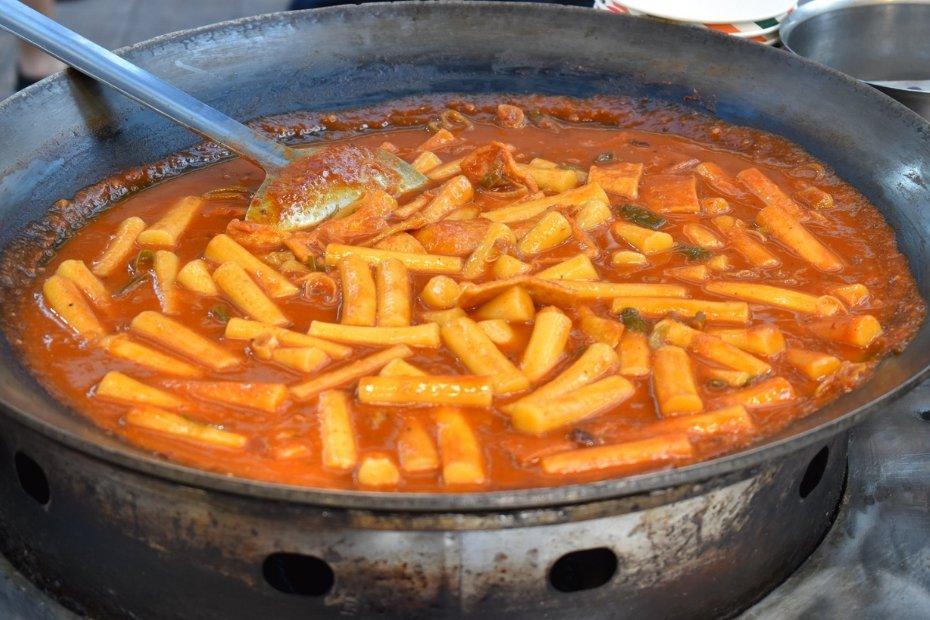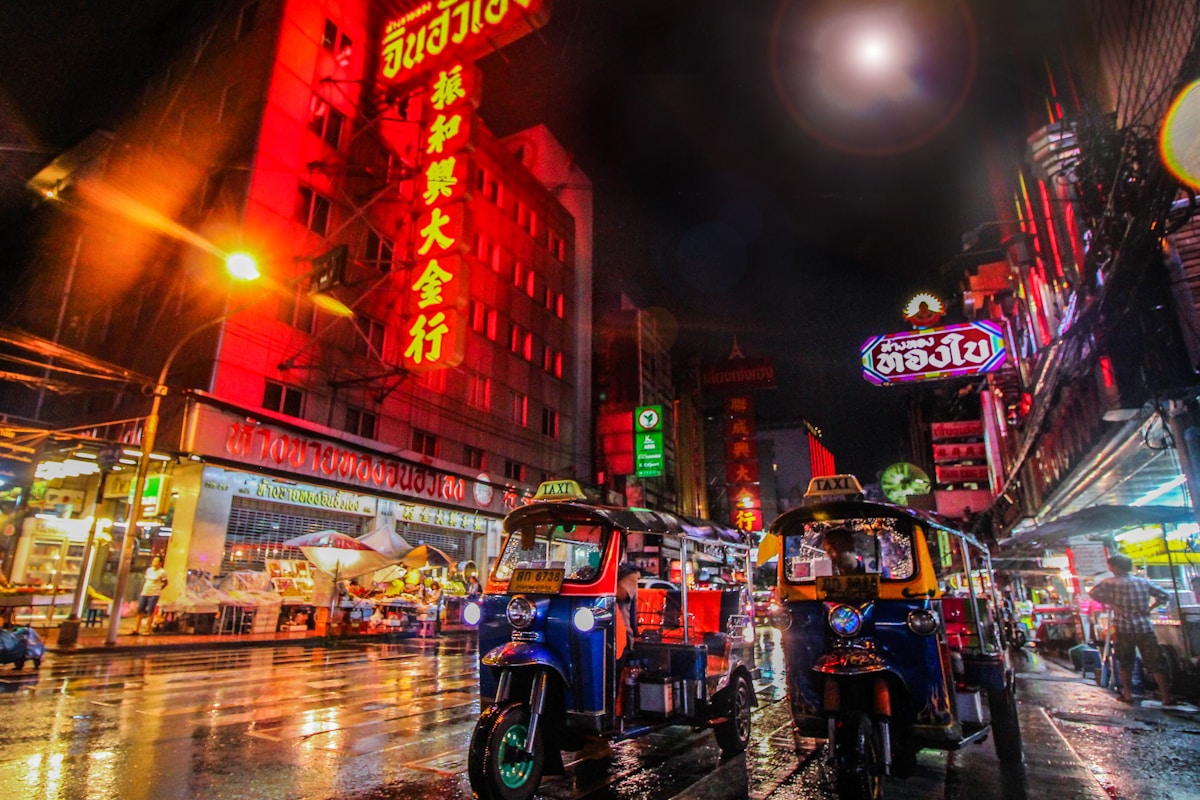Traveling to Korea and want to know what delicious dishes you shouldn’t miss out on? Then check out this list of the most mouthwatering foods in Korea, from traditional Korean dishes to spicy street food snacks that you’ll crave long after you’ve left. Korean cuisine is hot around the world right now, not just because of the excessive amount of chili peppers in some dishes, but because everyone wants to sample this unique range of dishes that includes smoky Korean BBQ, refreshing cold noodles, healthy vegetarian-friendly bibimbap, and the 101 flavors of gimbap.
After you finish reading this list of top foods in, you’ll probably want to sample them all. The good news is that you can do that in Korea easily because Korean food is relatively cheap, especially street food. You can fill your face for less than $10 per person with almost all these dishes. Korean BBQ is a bit more, but it’ll probably pay half the price you’re used to paying outside of the Land of Morning Calm, as Korea is known.
Without further ado, let’s tuck into these top Korean foods, starting with everyone’s favorite, Korean BBQ.
1. Samgyeopsal (Korean BBQ)

If there’s one food in that tourists and locals alike will always be happy to try, it’s a fiery meal of samgyeopsal (literally: three-layered fat), also known as Korean BBQ. The massive meal has it all – a flaming grill, thick slices of pork belly, lots of Korean side dishes, and lettuce leaves to wrap it all up in.
A Korean BBQ might look daunting at first, but it’s not hard to enjoy. Throw the meat on the grill, slice it up when it’s almost ready to eat, grab a lettuce leaf, pick your extra ingredients (I recommend garlic, onion, and kimchi), put the meat on top of that, wrap it up into a ball, then shove it in your mouth. Repeat until you’re ready to explode!
This is a meal that’s best shared (you can’t order it for one) and accompanied by traditional soju – a cheap spirit that goes well with fried foods. Not a fan of pork? There are lots of other fried meat foods to try in Korea, such as bulgogi, which uses beef, or dalkgalbi, which has chicken.
2. Bibimbap (Mixed Rice With Veg)

This is one of the healthiest foods in Korea and is perfect during summer or winter. Bibimbap, which means ‘mixed rice’ is served in a metal bowl with a mixture of vegetables, roots, rice, spicy sauce, and a fried egg (served on top). To eat bibimbap, you first have to grab a pair of chopsticks or a spoon and mix it all together. It’s a healthy dish because you also get a bit of exercise before you start eating it!
If you’re visiting Korea in winter, there’s a version called dolsot (hot stone) bibimbap that’s a bit different. Instead of a metal bowl and cold ingredients, you get a hot stone bowl with hot rice and a raw egg on top. You still have to mix everything, but as you mix it, the egg cooks and melds with the rice and other ingredients, giving you a kind of egg-fried rice with vegetables. It’s one of the best Korean winter dishes and the perfect antidote to the cold Korean weather.
The best place to try bibimbap in Korea is in the Jeonju Hanok Village, a traditional village in the city of Jeonju where you can experience this traditional meal seated at a wooden table in a traditional Korean hanok house. Jeonju is the home of Jeonju-style bibimbap and you’ll find the best ingredients at the traditional restaurants here. You can also find yuk-hoe bibimbap, which comes with raw beef (steak tartare) on top.
3. Kimchi Jjigae (Kimchi Spicy Stew)

Another delicious Korean winter dish is a steaming pot of kimchi jjigae, or kimchi stew. This spicy, meaty stew is made with thick slices of kimchi, chunks of pork, and a range of other ingredients, which can include noodles, tofu, and some greens. Kimchi jjigae is either served in a hot stone bowl for 1 person to enjoy, or in a large metal pot over a gas cooker where everyone can scoop out as much jjigae as they can eat. It’s served with a bowl of rice in a metal pot which soaks up the spicy broth and balances out the strong, salty tastes.
This is a meal best shared as then you get the real experience with the large shared pot and a whole cabbage (kimchi is typically made of fermented cabbage) of kimchi to cut up and share. Order some ramyeon noodles to add to the broth and you’ve got a large, not-so-healthy but filling and delicious Korean meal that will leave you wanting to curl up and have a pleasant nap. Like a Korean BBQ, this is a filling meal that goes well with Korean beer and soju to wash the meaty, spicy flavors away.
4. Gimbap (Seaweed-Wrapped Rice Rolls)

One of Korea’s most-loved lunchtime snacks and easy-to-grab meals are the humble gimbap, which means seaweed-wrapped rice. If you go into any Korean convenience store, you’ll notice rows of gimbap in various shapes and sizes, including the $1 triangle gimbap and the slightly more filling roll gimbap. Don’t mistake these for Japanese sushi rolls because they’re far more diverse and usually don’t come with fish inside (except for tuna). They’re also more filling and come in a wider range of flavors that include spicy beef, tuna mayonnaise, pork cutlet, scrambled egg, bibimbap, and lots more.
As well as being a convenient snack for hungry travelers or starving students, you can also enjoy gimbap as a meal in a restaurant. These provide a cheap meal and go well with a bowl of tteokbokki (covered next), fried dumplings, or kimchi-fried rice. A roll gimbap costs as little as $2-3 in a restaurant and comes with a small portion of kimchi and a jug of water. If you’re looking to save money as you travel in Korea, then definitely visit one of the many gimbap shops in Seoul.
5. Tteokbokki (Spicy Stir-Fried Rice Cakes)

An extremely popular street food that’s often on people’s Korean food bucket lists is a spicy red dish known as tteokbokki. Tteokbokki is made with rice cakes (shaped as thick tubes) and fish cakes (flat squares), cooked up together in a bright red sweet and spicy sauce that’s as messy as it is mouthwatering. If you order tteokbokki in a restaurant, it’s served in a large metal dish that everyone scoops out of. You can also add ramyeon noodles, boiled eggs, and grated cheese on top, in case the dish isn’t filling enough!
Be warned, some versions of tteokbokki can be very spicy, so make sure you’ve got a cool drink to go with it. Different vendors and restaurants will have their recipes, so it’s worth trying tteokbokki at different places as you travel in Korea. Traditional markets and street food areas, such as Hongdae and Myeongdong, are the best places for authentic tteokbokki.
6. Korean Fried Chicken

You might not expect such a globally popular dish as fried chicken on a list of the best foods in Korea, but the way Korea does this dish will leave you looking at the other KFC with disappointment. This is also one of the most popular meals for locals and tourists to enjoy on the weekend, along with an unhealthy amount of beer and a side of potato wedges. What makes this so Korean is the range of seasonings and sauces that goes with the chicken, including the incredible yangnyeom seasoning that’s a blend of spicy chilies, garlic, sugar, and other spices.
Walk around any busy area in Seoul at night and you’ll probably see a fried chicken restaurant, often labeled as ‘Hof’- restaurants that specialize in chicken and beer. The combo of beer and chicken is so popular that Korea has a special term for it – chimaek. Chi for chicken, maek for maekju, the Korean word for beer. There’s even a chimaek festival in Daegu during the summer dedicated to fried chicken and beer!
7. Kalguksu (Knife-Cut Noodle Soup)

Not so well-known to travelers to Korea, but a regular favorite in Korea, kalguksu is the perfect Korean food to have when you’re feeling down during winter. This simple dish is made with knife-cut noodles in a hearty broth. The noodles are best when made and cut by hand so they’re thick and chewy. You can get kalguksu with various ingredients, including shellfish, pork, coriander, and some leafy veg, but it’s often best without much added so you enjoy the simple tastes of the broth and hand-made noodles.
A bowl of kalguksu will set you back less than $8 and will easily fill you up. If you’re really hungry, you can order some mandu (Korean dumplings) to go as a side or add to the bowl. You’ll often find kalguksu restaurants in the quieter parts of a city where people live or out in the countryside where people drive to sample the honest tastes in natural surroundings.
8. Mul Naengmyeon (Ice-Water Cold Noodles)

A summer favorite that’s as refreshing as it is filling, mul naengmyeon is just a big bowl of thin noodles in an icy-cold broth with very few extra ingredients. A good mul naengmyeon restaurant will add big chunks of ice to the broth keep it frosty and make the noodles a bit firmer than you find in hot broths. You can add vinegar and mustard to the broth to give it an extra dash of flavor, but aside from that, you’ll love this Korean food for its simplicity and humble tastes. And you’ll probably make a big mess slurping up the noodles.
Mul is the Korean word for water and there’s another version of this dish without water called bibim naengmyeon, where the water is replaced with a spicy chili pepper sauce to go with the cold noodles. This is a great variation for those who want a cool dish with a kick. Some restaurants add a lot of chili pepper paste to this version though, so be careful if you’re not good with spice.
If you’re interested in trying one or all of these delicious meals, the best way would be to take a food tour in whichever city in Korea you are visiting. We recommend having most of these during a visit to Seoul. Not only does it give you a chance to explore the neighborhood but also shows you the recommended hidden gems you may not have found on your own. Enjoying the food culture is what makes traveling fulfilling, especially in your tummy.




